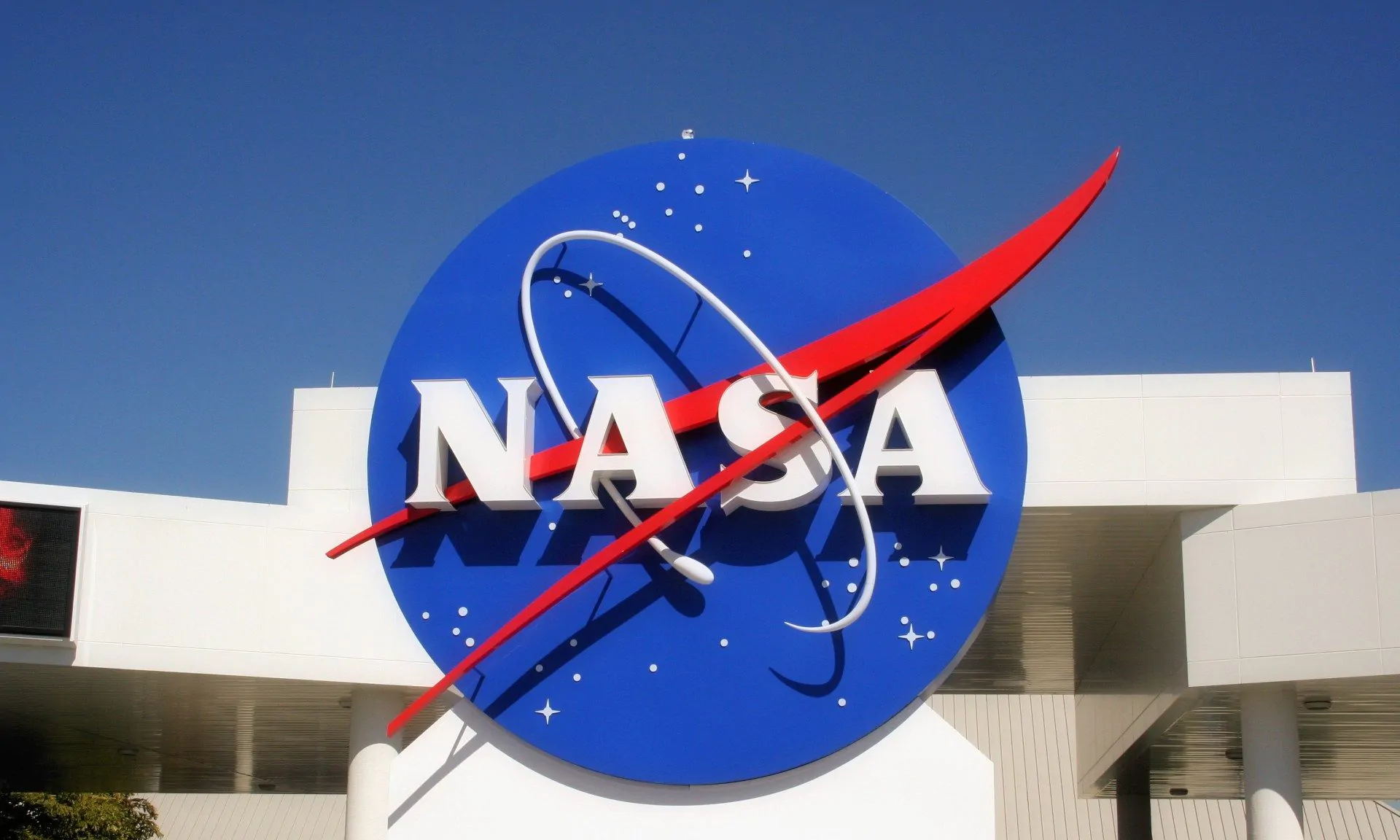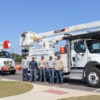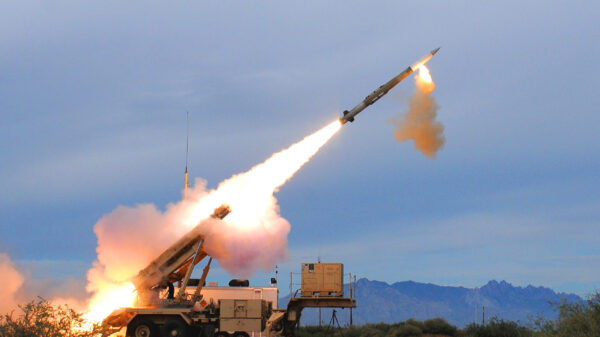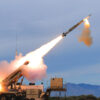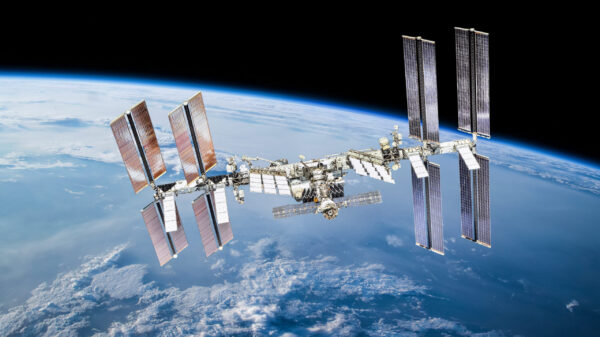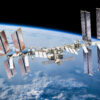NASA had an eventful 2018, which the agency highlighted in a press release.
The agency welcomed a new administrator, Jim Bridenstine, deputy administrator, Jim Morhard, and chief financial officer, Jeff DeWit, in 2018.
“Our agency’s accomplishments in 2018 are breathtaking,” Bridenstine said in a statement. “We’ve inspired the world and created incredible new capabilities for our nation. This year, we landed on Mars for the seventh time, and America remains the only country to have landed on Mars successfully. We created new U.S. commercial partnerships to land back on the Moon. We made breakthroughs in our quest to send humans farther into space than ever before. And, we contributed to remarkable advancements in aviation. I want to thank the entire NASA team for a fantastic year of American leadership in space, and I am confident we will build on our 2018 successes in 2019.”
In 2018, NASA celebrated the agency’s 60th anniversary on October 1.
“President Eisenhower launched our nation into the Space Age and President Kennedy gave us the charge to reach the Moon,” Bridenstine said. “Over six incredible decades, we have brought the world an amazing number of bold missions in science, aviation and human exploration. NASA and its workforce have never failed to raise the bar of human potential and blaze a trail to the future. We celebrate our legacy today with great promise and a strong direction from the President to return to the Moon and go on to Mars.”
The Office of the Chief Financial Officer received a successful clean audit in 2018 and
DeWit led his Strategic Investments Division in working with the Government Accounting Office to pass an official Corrective Action Plan to increase accountability and transparency into the costs of large programs and proactively improve NASA’s program and project management activities.
NASA’s new Space Policy Directive-1 (SPD-1) provides a directive for NASA to return humans to the surface of the moon for long-term exploration and utilization and pursue human exploration of Mars and the broader solar system. SPD-2 was passed by the White House in February to help ease the regulatory environment so entrepreneurs can thrive in space. SPD-3 was passed in June to helping ensure that the U.S. is a leader in providing a safe and secure environment as commercial and civil space traffic increases.
As part of America’s return to the Moon, in October, NASA issued a call for lunar surface instruments and technology payloads that will fly to the Moon on commercial lunar landers as early as next year. On Nov. 29, the agency announced nine U.S. companies are eligible to bid on NASA delivery services to the lunar surface through Commercial Lunar Payload Services (CLPS) contracts.
NASA hosted a conference in February for scientists across a variety of disciplines to discuss future exploration and research using the Gateway, a spacecraft that will orbit the Moon and support human and robotic missions.
NASA issued several requests for information and ideas from U.S. companies about the Gateway’s use and supply, as well as lunar payload transportation capabilities, and construction of its power and propulsion element.
NASA continued to refine requirements for a U.S. habitat module for the Gateway and technology to use and process space-based resources through the Next Space Technologies for Exploration Partnerships-2 (NextSTEP-2).
The transportation system that will carry astronauts from Earth to the Gateway and help build the structure in orbit is coming together around the country for the first launch of NASA’s Space Launch System (SLS) rocket and Orion spacecraft.
NASA delivered the second piece of SLS flight hardware to its Kennedy Space Center in Florida earlier this year. The Orion stage adapter will connect the spacecraft to SLS and will be loaded with 13 small satellites on the first mission.
Engineers are completing final outfitting and assembly of the five major structural pieces of the SLS core stage at NASA’s Michoud Assembly Facility in New Orleans.
Engineers at NASA’s Marshall Space Flight Center in Huntsville are putting the finishing touches on the 30-foot-tall launch vehicle stage adapter, which will connect SLS’ core stage to the interim cryogenic propulsion stage delivered to Kennedy last year, while engineers at Kennedy installed Orion’s reentry heat shield. The ESA (European Space Agency) delivered to Kennedy the service module that will propel, power and cool Orion during the first integrated flight test with SLS – Exploration Mission 1.
Workers at Kennedy completed construction on the main flame deflector at Launch Pad 39B, and engineers installed the final umbilical on the mobile launcher before rolling the massive tower on Crawler-Transporter 2 to the pad.
Also in 2018, NASA’s Curiosity rover on Mars identified fragments of complex organic molecules in the shallow surface of Mars, giving us further evidence that the planet might have hosted life at one point in the distant past.
NASA launched and landed the Interior Exploration using Seismic Investigations, Geodesy and Heat Transport (InSight) on Mars. InSight landed on Mars in November to study the planet’s interior.
NASA announced that the next Mars rover in 2020 will continue the agency’s efforts to search for evidence of life and prepare for human arrival.
The agency completed more than 4,300 hours of testing on Solar Electric Propulsion (SEP) Hall thrusters; shipped the Orion pressure vessel for first crewed flight to Kennedy; performed the final test of Orion’s parachute system; began preparation for test of Orion’s launch abort system; several parts of SLS entered production or were completed for second Orion mission; and new series of SLS RS-25 engine test firings included nine tests of 3D-printed parts. \\
NASA also launched the first combination 3D printer and recycler to the International Space Station to demonstrate new in-space manufacturing technology; solicited new ways to manage trash on deep space missions; ten companies were chosen to conduct studies and advance technologies to collect and use space-based resources; and the 3D-Printed Habitat Challenge progressed as participating teams created digital models of Martian habitats and constructed and tested foundation prototypes.
In 2018, NASA’s Parker Solar Probe was launched. This was the first-ever mission to “touch the Sun.” The mission broke records for fastest human-made object and closest approach to the Sun, and sent home its first light images – including a picture of Earth – in late October. Its first flight through the Sun’s outer atmosphere was on Nov. 7.
After a two-year journey, NASA’s Origins, Spectral Interpretation, Resource Identification, Security-Regolith Explorer (OSIRIS-REx) mission arrived at the asteroid Bennu, on December 3. OSIRIS-Rex has discovered water locked inside the clays that make up Bennu.
In December, NASA announced its Voyager 2 probe has exited the heliosphere – the protective bubble of particles and magnetic fields created by the Sun.
Using NASA’s Hubble Space Telescope and ground-based observatories, astronomers found in June that Oumuamua, the first known interstellar object to travel through our solar system, had an unexpected speed boost and a change in trajectory. Scientists believe the object is a new type of comet.
After nine years of searching for planets outside our solar system, NASA’s Kepler space telescope ran out of fuel, but not before scientists were able to use it, and Hubble, to find hints of what could be a moon orbiting another planet outside our solar system. This would be the first exomoon ever detected.
NASA’s Transiting Exoplanet Survey Satellite (TESS) was launched in April to continue the search for planets outside our solar system. The spacecraft, which began science operations in July, will survey the entire sky over the course of two years, searching for nearby exoplanets.
NASA’s Dawn mission, which launched in 2007, also ran out of fuel this year, but not before becoming the first spacecraft to orbit two separate bodies in the solar system – the asteroid Vesta and dwarf planet Ceres. Dawn helped scientists discover organics on Ceres and evidence that dwarf planets could have hosted oceans over a significant part of their history and might still.
The Independent Review Board established by NASA to assess progress on its James Webb Space Telescope unanimously recommended this year that development on the world’s premier science observatory should continue. NASA established a new 2021 launch date for Webb, and completed several critical tests and milestones in 2018, including vibration and acoustic tests and a simulation of the telescope’s complex communications. The two halves of Webb – the spacecraft and the telescope – were connected temporarily for a communications test during which they successfully “spoke” to each other.
New analysis of data from NASA’s Galileo spacecraft indicate that the magnetic field around the moon Ganymede makes it unlike any other in the solar system.
In 2018, NASA astronauts Mark Vande Hei, Scott Tingle, Serena Aunon-Chancellor and Anne McClain participated in their first spaceflight missions to the International Space Station. Veteran astronauts Joe Acaba, Ricky Arnold, and Drew Feuste also completed missions aboard the space station this year.
The crew members of Expeditions 54-58 supported more than 100 new U.S. science investigations. Information learned from the unique orbiting laboratory is being used to prepare for future missions to the Moon and Mars as well as to improve life on Earth through research sponsored by the U.S. National Laboratory. In February, astronauts set a new record-setting week of research that surpassed 100 hours.
Research conducted on station in 2018 included experiments to understand plants on Earth as well as plants growing in space, and new facilities that may help us to understand the materials needed for exploring the universe, the physiology of life in space and the basic elements of the universe itself.
The space station now hosts the first combination 3D printer and recycler to demonstrate a new in-space manufacturing capability, Biomolecule Extraction and Sequencing Technology (BEST) to help identify microbes aboard the space station, and the Bigelow Expandable Activity Module (BEAM).
Nine U.S. astronauts were assigned to Commercial Crew Program missions aboard the Boeing CST-100 Starliner and SpaceX Crew Dragon. Both companies have begun final testing of their spacecraft and associated systems, and the first test flights are expected in 2019.
The first U.S. astronauts who will fly on American-made, commercial spacecraft to and from the International Space Station will be Victor Glover, Mike Hopkins, Bob Behnken, Doug Hurley, Nicole Aunapu Mann, Chris Ferguson, Eric Boe, Josh Cassada and Suni Williams.
Expedition 56 astronauts installed new cameras on the station in June to provide enhanced views of the two new American spacecraft as they approach and dock to the station.
NASA astronaut Nick Hague and Russian cosmonaut Alexey Ovchinin were forced to abort their planned mission to the orbital laboratory. They were reassigned to the Expedition 59 mission, targeted to launch Feb. 28, 2019.
Successful commercial partnerships with Northrop Grumman and SpaceX for cargo resupply resulted in five missions delivering more than 32,000 pounds of critical supplies to the International Space Station. The SpaceX Dragon capsule also returned more than 7,800 pounds of investigations and equipment to researchers on Earth.
NASA began operating a new space communications satellite to support more than 40 NASA missions in low-Earth orbit as well as astronauts living in space on the orbital laboratory, enabling it to continue communications support well into the next decade.
NASA continued to update the space communication and navigation networks that support 83 missions, returning data from the solar system, and beyond, back to Earth. This includes upgrading emergency communications ground stations that support the space station and refurbishing its Bermuda Tracking Station, which supports launches from the agency’s Wallops Flight Facility in Virginia, and will support launches of commercial crew to the space station and Orion/SLS missions to the Moon from Florida. The agency issued a call for studies to explore designs incorporating commercial elements into future space relay services.
NASA selected 13 companies to study the future of commercial human spaceflight in low-Earth orbit, including long-range opportunities for the International Space Station.
NASA and its space station partners marked the 20th anniversary of the launch and construction of the first elements of the International Space Station.
In April, the agency awarded Lockheed Martin Aeronautics Company a contract to build the Quiet Supersonic Technology (QueSST) aircraft, designated the X-59, which will demonstrate quiet supersonic flight over land. In July, NASA signed an agreement with its French counterpart to collaborate on research predicting where sonic booms will be heard as supersonic aircraft fly overhead.
Acoustics experts at NASA’s Glenn Research Center in Cleveland recently used the center’s Aero-Acoustic Propulsion Laboratory (AAPL) to complete an evaluation on a small-scale model of a Learjet engine exhaust, or nozzle, system.
In October, an X-59 model was tested in a wind tunnel at NASA’s Langley Research Center in Virginia to collect data about the aircraft’s flight controls.
In November, the X-59 project completed a rigorous review and the agency committed to the project’s funding and development timeline.
Methods for measuring public perception of supersonic noise from the X-59 were tested over Galveston, Texas, using a NASA F/A-18 research jet.
Another major aeronautics focus was NASA’s ongoing work in Urban Air Mobility (UAM) – a safe and efficient system for passenger and cargo air transportation in and around urban areas.
In May, NASA partnered with the Federal Aviation Administration (FAA) and industry to demonstrate new Unmanned Aircraft Systems (UAS) Traffic Management (UTM) concepts that help maintain safe spacing between drones beyond visual line-of-sight.
In June, NASA’s remotely-piloted Ikhana aircraft successfully flew in the National Airspace System without a safety chase aircraft, relying on NASA-developed technology and moving the United States one step closer to normalizing unmanned aircraft operations in the national airspace.
In November, the agency announced plans for a UAM Grand Challenge.
NASA engineers used a test stand called AirVolt to test the cruise motors that will power NASA’s first fully electric X-plane, the X-57; the agency looked into how icing affects jet engines at high altitudes; completed a series of Acoustic Research Measurement flights that combined several technologies to achieve a greater than 70 percent reduction in airframe noise; and conducted research to furthered the ability to fly safely with newly configured, highly flexible wings by flying the X-56 to collect data on wing flutter models and ways to suppress it.
NASA worked in 2018 to help modernize and improve the nation’s air traffic management system by transfer to the FAA of NASA technology developed so aircraft arriving at busy airports can be managed more efficiently.
NASA and the Department of Energy demonstrated a new nuclear reactor power system that could provide surface power on the Moon and Mars.
A team of NASA engineers demonstrated the first: fully autonomous X-ray navigation in space, which could revolutionize NASA’s ability to pilot robotic spacecraft to the far reaches of the solar system and beyond. NASA announced 10 new lunar focused Tipping Point partnerships with six U.S. companies.
The Robotic Refueling Mission 3 launched to the space station aboard a SpaceX rocket. The technology demonstration will store and transfer super-cold cryogenic fluid in space, helping mature capabilities for robotic satellite servicing and refueling.
The Integrated Solar Array and Reflectarray Antenna CubeSat mission advanced high-speed data downlink from space, a communications technology also used by two small satellites to relay InSight’s Mars landing data back to Earth.
A small satellite achieved space-to-ground laser communications for the first time. The Optical Communication and Sensor Demonstration mission transmitted at a data rate of 100 megabits per second – 50 times greater than standard communications systems for spacecraft this size.
NASA advanced additive manufacturing for rocket propulsion and successfully hot-fire tested a combustion chamber made using new 3D printing techniques.
A team of engineers completed ground demonstrations of the autonomous capture portion of the Restore-L satellite servicing project.
NASA’s three In-space Robotic Manufacturing and Assembly partners completed ground demonstrations of robotic arms, vision systems, additive techniques and other cutting-edge technologies to assemble structures in space.
NASA’s Flight Opportunities program funded more than 40 payload flight demonstrations, providing opportunities for researchers to test new technologies and helping mature the suborbital flight industry.
In September, the innovative heat shield technology, Adaptable Deployable Entry Placement Technology conducted a flight test.
NASA awarded more than 550 small business contracts, totaling more than $180 million.
NASA scientists using an array of NASA satellite observations have mapped locations around the world where the availability of freshwater is changing. The study found that Earth’s wet land areas are getting wetter and dry areas are getting drier.
NASA satellites were used to help combat a potential outbreak of life-threatening cholera in Yemen.
In November, NASA scientists and satellite data analysts worked daily to produce maps and damage assessments for disaster managers battling major wildfires near Los Angeles and in Northern California.
A major international climate assessment funded by NASA and the ESA determined that ice losses from Antarctica have tripled since 2012, causing sea levels to rise faster today than at any time in the past 25 years.
NASA launched the Global-scale Observations of the Limb and Disk (GOLD), its first mission to provide unprecedented measurements of the temperature and composition of Earth’s upper atmosphere.
During 2018 teachers-turned-astronauts Joe Acaba and Ricky Arnold inspired thousands of students and educators through live events and video lessons from space.
NASA continues to offer educators and nonprofits low-cost opportunities to conduct research in space through its CubeSat Launch Initiative, including kicking off its 10th annual call for submissions, while NASA and the American Society of Mechanical Engineers Foundation are engaging K-12 students with a series of Future Engineers challenges.
NASA engaged in public events including: a National Symphony Orchestra Pops concert; “Space, the Next Frontier” concert celebration at the John F. Kennedy Center for the Performing Arts; “Spirit of Apollo” tribute from Washington National Cathedral; First Man press junket and red-carpet screening; Space Symposium; USA Science & Engineering Festival; International Balloon Fiesta; International Observe the Moon Night; Awesome Con; and EAA AirVenture, more than five million people had the chance to interact with representatives of America’s space agency.
NASA’s digital communications team won another Webby Award and four People’s Voice awards in 2018. NASA.gov, the agency’s primary website, received its third consecutive, and 10th overall, People’s Voice Award in the Government & Civil Innovation category.
NASA’s Jet Propulsion Laboratory received an Emmy Award in 2018 for Outstanding Original Interactive Program for its coverage of the Cassini mission’s Grand Finale at Saturn in September 2017.
NASA’s social media presence grew in 2018 to more than 186.9 million total followers across all accounts and platforms. The agency has the most followers of any agency or department in the federal government on Facebook, Instagram, Twitter, Snapchat and Google+. The agency also hosted 25 NASA Socials this year, bringing together more than 880 followers who engage with NASA via social media for unique in-person experiences of exploration and discovery.
To learn more about NASA’s missions, research and discoveries, visit:







































